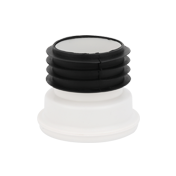- Quick selection
-

BRASS FITTINGS
-

PPR VALVES
-

PPR FITTINGS
-

FLEXIBLE HOSES
-

PLASTIC ACCESSORIES
-

OTHERS

BRASS FITTINGS

PPR VALVES

PPR FITTINGS

FLEXIBLE HOSES

PLASTIC ACCESSORIES

OTHERS
Unique Bathing Customs around the World
For many people, bathing isn’t only for personal hygiene, it is also an act of self-care. Taking showers can be soothing and energizing, and many like to start or end their day with a good bath.
Bathing inspires meditation and serves as a healing tool for the human body spiritually and physically. A walk down history lane will enlighten you about several bathing rituals that have existed for centuries. Here are some of the common and unique bathing customs around the world.
Sweat Lodge and Steam Baths
A sweat lodge is an effective therapeutic purification technique for nations prone to colder climates. Heat and steam cause the pores to open, allowing the body to sweat out pollutants.
The Russian banya, which offers a true steam bath of rejuvenation, is possibly the hottest. It is similar to a wooden sauna with heated stones sprayed with water to increase the temperature and produce more steam.
To improve their blood circulation, bathers are renowned for beating themselves with bundles of birch twigs. Hats are also used to protect the head and hair. These are crafted with various branches for therapeutic uses.
The bathers’ ultimate showdown will be a jump into the snow, a cold pool, or a cool shower. The body is supposed to be revitalized afterward. Extracts from “The New Mind-Body Science of Depression” by Charles Raison and Vladimir Maletic suggest that body temperature changes can have an anti-depressive impact.
Finnish culture includes saunas from when a person is born; some mothers even have saunas in their birthing rooms. It is a family custom frequently used in diplomatic actions and shared by friends and relatives. Politicians from Finland and Russia have frequently met in sweat lodges.
Finnish culture
The Middle Eastern way, however, is that of the hammam or Turkish bath, distinguished by a domed roof and a unique heating system in which the heat is transferred via the floor and walls. It serves largely as a social gathering spot, with your relaxation needs being attended to by a bath attendant.
Pools are absent. Instead, the water runs freely over the marble troughs, creating steam as it does so when it comes into contact with the heated stone floor. The temazcal is yet another variety of sweat lodges, an ancient Mesoamerican Mayan rite that involves four stages and demands fortitude.
Leaders of Mayan villages frequently resolved their conflicts in the temazcal, which may last for days as they discover nice ways to coexist. The process forces the mind to succumb to oppressive conditions and release its tensions through sweat.
Chants and breathwork under the shaman’s guidance accompany this rite. And participants are given a cold water plunge and sweet fruit to replenish energy and hydrate after the ritual.
Mineral Pools and Bathhouses
Some of the earliest bathhouses date to the Roman Empire’s second century B.C. The use of herbs, oils, and minerals was believed to make these a veritable delight for all the senses, enjoyed in magnificent mosaic palaces and lovely pools.
These bathhouses frequently had a variety of chambers with various water temperatures, swimming pools, and areas for unwinding. It served as the ultimate hub of culture and social interaction. Sometimes individuals would even stay days at the bathhouse, solving issues over a meal and a glass of wine.
The beauty of the ancient Roman baths, which are now only visible as ruins, is something to write home about and is what inspired the construction of the modern baths. People are connected to their bodies through communal bathing.
It is a profound, simple, and almost primordial experience. A modern bathhouse typically finds several pools with different water temperatures, steam rooms, and treatment rooms for particular services.
Natural hot springs are frequently associated with swimming in Japan. The importance of bathing is equal in Japanese society to that of eating and sleeping. Additionally, the act merits careful consideration; for instance, Japanese tradition dictates that people enter the bath already clean. They prepare for appropriate bathing with a preparatory ritual of scrubbing and washing.
hot springs
The first hot springs were built in the sixth century and were only for emperors to use. These days, indoor man-made facilities and outdoor natural hot springs offer this popular bathing type. The temperature of the water, its mineral makeup, and the water vapor that escapes from the baths are the main topics of discussion.
How to Introduce Mindful Bathing to Our Daily Life
Purposeful Bathing
Because they didn’t bathe as regularly in the past, some societies have always emphasized deliberate bathing—that is, bathing performed for a specific purpose. Although taking a shower or a bath is an everyday activity in modern culture, try to keep your intentions in mind as you go in the water.
Use Sustainable and Natural Bath Products
Many bathing necessities sold today contain bioaccumulative synthetics, petroleum byproducts, unsustainable ingredients like palm oil, and chemical-filled washes. However, historically, bathing included herbal and mineral-infused natural medicines.
Consider Taking a Therapeutic Bath
Therapeutic bathing can provide numerous benefits to the human body. Ingredients such as rosemary, basil, and rue in their essential form are highly effective in removing negative energies and cleaning the entire body.
For a whole herbal bathing experience, if you don’t have a tub, place a bowl of boiling water or an oil diffuser in the bathroom while you shower. Himalayan bath salts in the tub with crystals that speak to you or the astrological situation at large are Poon’s suggested ritual.
Use an abalone shell to cleanse yourself one drop of water at a time or to smudge a stick of your choosing and produce some soothing smoke. The accompanying ingredients serve as the soul’s food, and this repetitive deed is like a mantra to it.
Conserving Water
Unfortunately, many parts of the world lack access to clean water due to droughts, pollution, and other factors. Consider carefully how long and how often you shower, and whenever you can, take a bath rather than a shower because you can more easily control how much water you use.
PECENT_POSTS
CONTACT US

+86 13065799859
Mob
